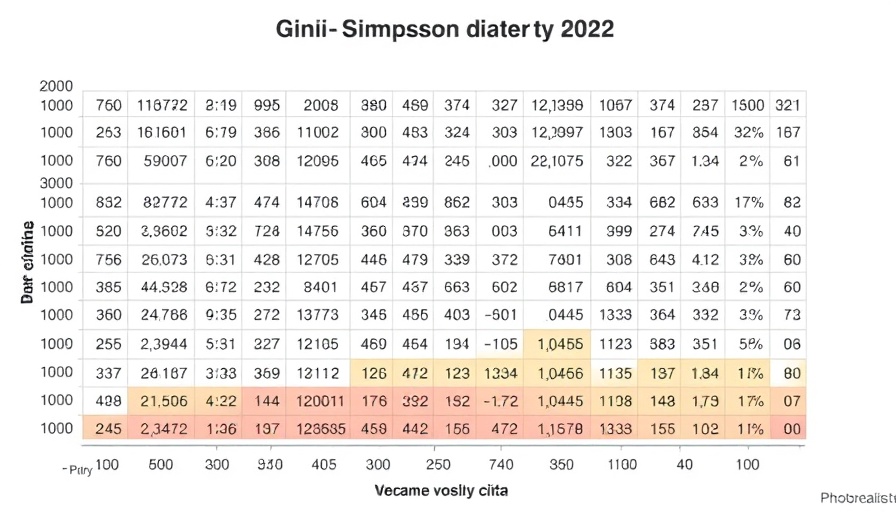
Understanding the Gini-Simpson Diversity Index in AI
The Gini-Simpson diversity index is a mathematical tool that's gaining traction in fields such as AI research, where understanding data diversity can be pivotal. This index helps us quantify how diverse a set of categories (or classes) is within a sample. As we dive deeper into AI and its learning algorithms, grasping diversity in data sets increasingly dictates the effectiveness of models, emphasizing the index's relevance.
Why Data Diversity Matters in AI Learning
Data diversity plays a crucial role in the performance of AI systems. A learning path filled with diverse data can lead to more generalized and robust models, while a lack of variety may lead to overfitting, where a model performs well on training data but poorly in real-world scenarios. Understanding how to measure this diversity, such as through the Gini-Simpson index, enables practitioners to ensure their AI systems are trained on adequately diverse datasets, thereby enhancing predictive accuracy and functionality.
Historical Context: Evolution of Diversity Measures
The Gini-Simpson index has spilled over from ecology into sectors like AI and data science, revealing its versatility. Initially designed to measure species diversity, this index has been adopted to analyze user behavior, market segmentation, and more. As industries increasingly rely on datasets characterized by multiple classes or types, the application of this index becomes not just useful but essential.
Future Predictions: The Advancement of AI Diversity Metrics
As AI continues to evolve, the methodologies for determining data diversity will likely become more sophisticated. Current models that utilize the Gini-Simpson index may be adapted and enhanced to accommodate new types of AI learning paths. This adaptability holds great promise for the future, suggesting that diverse AI systems could significantly outperform their more homogenous counterparts, leading to innovations we've yet to fully imagine.
Practical Insights: Implementing the Gini-Simpson Index in AI
To practically implement the Gini-Simpson index within real-world AI applications, a stepwise approach can be beneficial. Begin by collecting data and categorizing it into distinct classes. Next, apply the formula to compute the simpson homogeneity index:
λ = ∑(n_i / N) * ((n_i-1) / (N-1))From this, calculate the Gini-Simpson diversity index as:
G-S index = 1 - λDoing so allows data scientists and AI practitioners to evaluate the diversity of their data systematically, tailoring their learning paths and strategies accordingly.
Conclusion: Embracing Diversity in AI Learning
The exploration of the Gini-Simpson diversity index reveals vital insights into how data diversity shapes AI learning outcomes. As we continuously foster advancements in AI technologies, integrating tools that measure categorical diversity ensures that we harness the full spectrum of insights hidden in our data. Now is the time to incorporate these metrics into our AI learning journeys—the potential impact on industries and society is substantial.
For those interested in diving deeper into AI learning and the intricacies of effective data utilization, exploring resources on AI science and diverse data applications can be incredibly beneficial.
 Add Row
Add Row  Add
Add 




Write A Comment